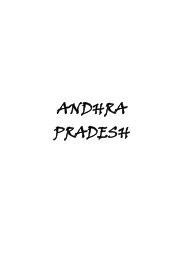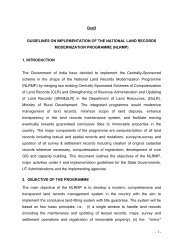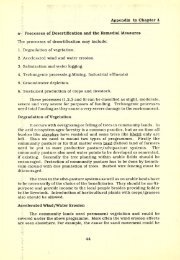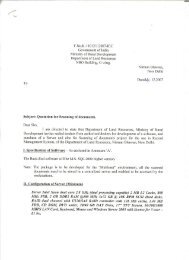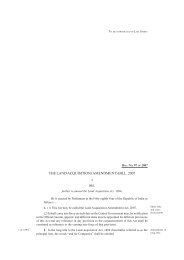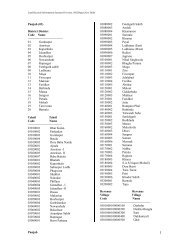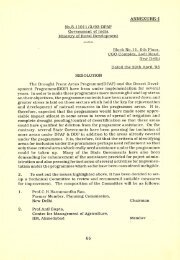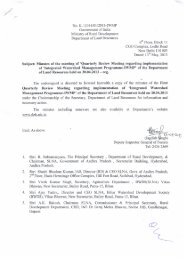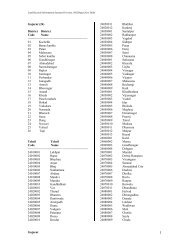Uttarakhand - Department of Land Resources
Uttarakhand - Department of Land Resources
Uttarakhand - Department of Land Resources
Create successful ePaper yourself
Turn your PDF publications into a flip-book with our unique Google optimized e-Paper software.
Major forest types occurring in the State are Tropical Moist Deciduous, Tropical Dry<br />
Deciduous, Sub-Tropical Pine, Himalayan Moist temperate, Himalayan Dry Temperate,<br />
Sub Alpine and Alpine Forest. Forests are largely distributed throughout the State with<br />
conifers and sal being the major forest formations. The State has 6 National Parks and<br />
an equal number <strong>of</strong> Wildlife Sanctuaries covering an area <strong>of</strong> 0.71 million ha, which<br />
constitutes 13.35% <strong>of</strong> its geographic area. The famous Corbett Tiger Reserve is located<br />
in the State covering an area <strong>of</strong> 0.13 million ha. Nanda Devi Biosphere Reserve, having<br />
an area <strong>of</strong> 0.59 million ha. is also located in this State.<br />
The Forest Cover <strong>of</strong> the State, based on satellite data <strong>of</strong> October – December 2004, is<br />
24,442 sq.km, which is 45.70% <strong>of</strong> the geographic area. Very dense forest is 4,002<br />
sq.km. moderately dense forest 14,396 sq.km. and open forest 6,044 sq.km.<br />
Van Panchayats in Uttaranchal were born out <strong>of</strong> conflicts and compromises that<br />
followed the settlements and reservations <strong>of</strong> forests in the hills at turn <strong>of</strong> the last<br />
century. The first government approved Van Panchayat was thus formed in 1921.<br />
According to recent estimates, there are 6,069 Van Panchayats managing 405,426<br />
hectares <strong>of</strong> forests (13.63% <strong>of</strong> total forest area) in the state. Most <strong>of</strong> these have been<br />
carved out <strong>of</strong> civil (protected) forests under the jurisdiction <strong>of</strong> the Revenue <strong>Department</strong>.<br />
The area under each Van Panchayat ranges from a fraction <strong>of</strong> a hectare up to over<br />
2,000 hectares.<br />
It may be mentioned here that Community forests managed in accordance with Van<br />
Panchayat Act is a hybrid <strong>of</strong> state ownership and community responsibility. In its efforts<br />
to manage and control community forest use Forest committees are guided by Revenue<br />
<strong>Department</strong> rules and by the technical advice <strong>of</strong> the Forest <strong>Department</strong>. In contrast to<br />
civil forests, community forests or Panchayati forests as they are popularly known are<br />
not „open‟ forests. Access and use <strong>of</strong> forests is guided by rules elaborately designed<br />
and implemented by the communities. Infact four identifiable working rules exist relating<br />
to Use, Monitor, Sanctions and Arbitration. Though only notionally or nominally owned<br />
by the communities, community forests are in a very real sense common property with<br />
an identifiable user group, have finite subtractive benefits and are susceptible to<br />
25




